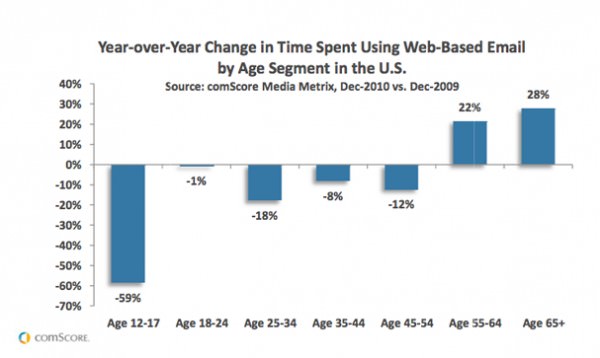5 areas of B2B email marketing to review
Email is in decline with the next generation of business professionals more likely to rely on SMS and social network messaging. Yet, most B2B companies still use email-based newsletters as a primary way of attempting to communicate with and engaging customers and prospects.

Email statistics
A recent Forrester report titled ‘How US Marketer’s use email’ heaped further concern on business use of email by summarizing:
- 6 in 10 B2B companies are keeping their marketing spend flat in 2011
- 71% use email to communicate with customers and prospects on a regular basis
- 33 % don’t routinely remove bad email addresses from databases
- 43% of B2B marketers think email will become more important to their marketing activity
So, the challenge is how to better use email as a form of content marketing in order to generate business from the permission you have worked hard to attain.
Creating more valuable emails
Encouragingly, the latest statistics on UK business email as reported on by Dave Chaffey on this site in March, indicate that there is reason for cautious optimism. But B2B companies need to accept that adding value through expertise is a much better strategy than simply selling.
If you count yourself in the majority that use email for B2B, there are five things you need to do now to ensure your B2B email campaigns stand the best chance of cut-through and so make it more valuable for your audience and your business.
1. Always offer opt out, make sure it's easy and it works
A strange place to start but it's the law! You should offer one-touch, unequivocal opt out just in case you have got the data wrong or the email is not required any more.
2. Provide relevant content
When used well, Email can pay dividends. You would do the same with a face-to-face presentation. Make the content relevant to customers. How can you help them do their job better, more effectively, more efficiently? Remind them why they are opted in and the benefits of continuing to receive your emails. Solicit their opinion and provide feedback when it has been offered.
3. Keep to agreed frequency
Deliver emails with the agreed frequency outlined when recipients sign up for them. The Smart Insights Emarketing Essentials email lands in your inbox weekly if you subscribe. It contains links to the latest website content. Abusing the permission you have earned by sending too much, too little or unwarranted email risks you being blacklisted in future.
4. Manage your list
Sounds obvious. We’ve all bought lists, picked up cards, collected Linkedin connections but have you put them all in one place and have you checked they remain relevant?
5. Cut your list!
Do you send the same email to your entire database? A better approach must be to segment by either live or lapsed customer, prospect met or as yet unmet, by geography or language, by vertical sector, job title or all of the above. Why? Different information is required by different people and most companies don’t have the resource or budget to personalise communications. Use different Excel lists and import them into your CRM tool to despatch separately.
Summary
Email may be in decline, as an older, mis-understood part of the digital toolkit. Social media, RSS, readers and other alert software all provide useful information in real-time - but B2B decision makers and influencers still subscribe to high quality relevant emails from companies they trust and respect. Some of them need to receive yours.





